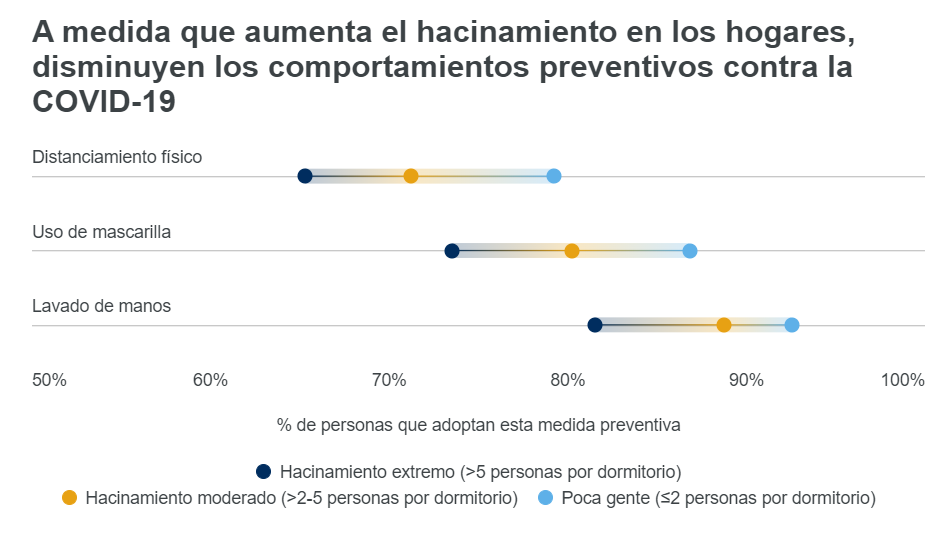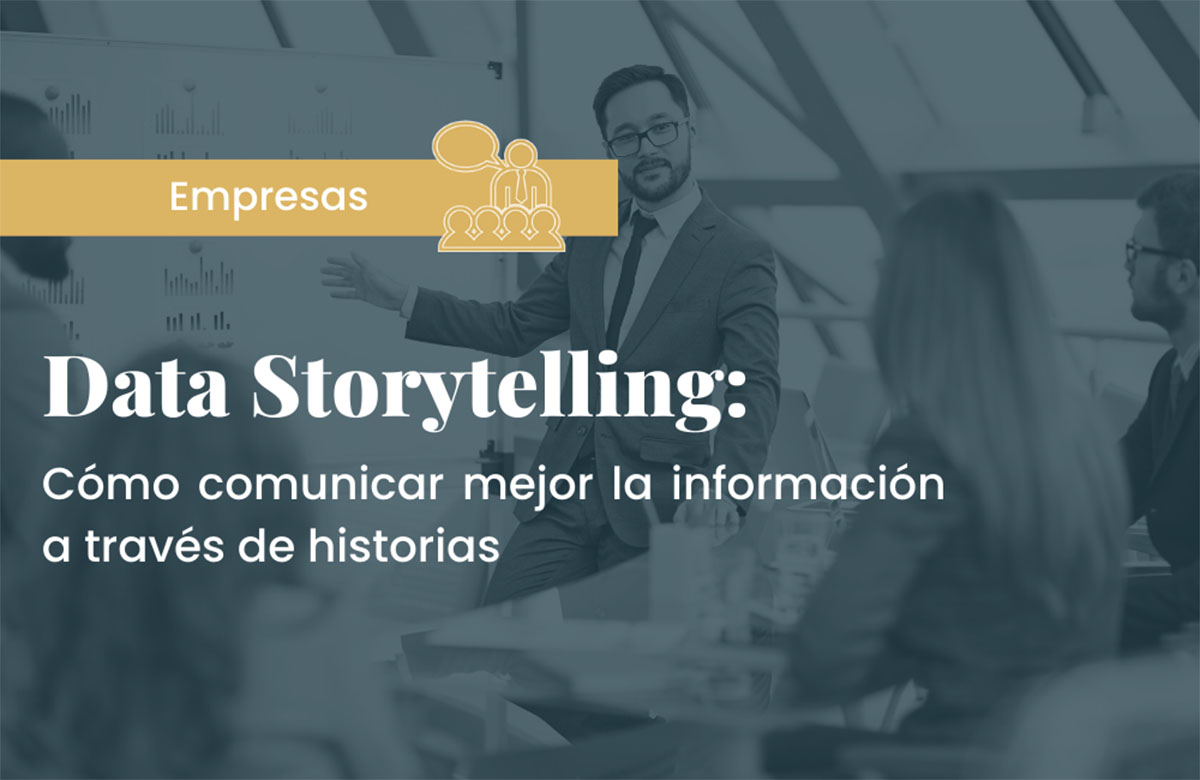The data storytelling is the process of using data to create a story. Data can be used to create a visual representation or to create a written story. Data storytelling can be used to communicate the results of data analysis, make them more accessible to a wider audience, or simply convey data in a narrative way.
[poll id=”30″]What is data storytelling?
For example, during a business meeting where sales strategies will be proposed, financial numbers and data will be reviewed, or different business agreements will be established, understanding and comprehending all this information can be very complex and, above all, boring for many people.
Not because the data is unimportant, far from it, but because the way of explaining it can be very technical and complicated to understand. Consequently, the audience loses interest or does not pay the necessary attention.
Data storytelling is an excellent strategy to capture the full attention of an audience, because it allows communicating data and all kinds of information in a simple and easy-to-understand way through entertaining narratives.
Data storytelling can be used to communicate the results of data analysis, make data more accessible to a wider audience, or simply help capture the attention of those we want to inform. Data storytelling is a powerful tool that can help make data more understandable and accessible.
How to do data storytelling?
There are many different ways to create a data story or data storytelling.
Choose the right data
The most important part of creating a data story is choosing the right data.
Data should be chosen based on the story that is going to be told. For example, if the story is about the results of a data analysis, then the data should be chosen based on what will help communicate the results of the analysis.
Once the data is chosen, the next step is to decide how to represent it
Data can be represented in many different ways, such as:
- Charts
- Graphs
- Maps
- Tables
- Audio-visual material in narrative form
The representation of the data should be chosen based on the story to be told and the audience it will be presented to.
For example, if the story is told to a general audience, the best way to represent the data may be a chart or a graph. If the story is told to a specific audience, such as data analysts, then a table might be the best way to represent the data.
Create the story
Once the data is chosen and the representation decided, the next step is to create the story.
The story should be created so that it is easy to understand and follow. It should also be interesting and engaging. A good way to make a story interesting and engaging is to use metaphors and analogies.
Benefits of data storytelling
Data storytelling has many benefits, which is why it is such a popular tool for companies and organizations. Data storytelling can help you:
Make complex data more understandable
When you present data in story form, it can be much easier to understand and digest. This is especially useful when dealing with large and complex datasets.
Engage the audience
A good story can be much more engaging than a dry presentation of data. Data storytelling can help you capture and maintain your audience’s attention.
Communicate your message more effectively
A well-told story can be a very powerful way to communicate your message. With data storytelling, you can take your data and turn it into a compelling narrative that will resonate with your audience.
Drive action and change
A good story can inspire people to take action. With data storytelling, you can use your data to create a powerful call to action that motivates your audience to make a change.
Build relationships
Data storytelling can help you build relationships with your audience. When you share a story, you are opening a dialogue and inviting people to connect with you on a deeper level.
Data storytelling is a powerful tool that can help you achieve all these objectives. When used effectively, it can make complex data more understandable, capture your audience, communicate your message more effectively, drive action and change, and build relationships.
Ways to apply data storytelling
- A line chart showing the decline in global temperatures over the last 100 years, with textual elements included or integrated into a narrative.
- A bar chart comparing the average income of men and women in different countries.
- A scatter plot showing the relationship between the amount of study time and the grades obtained.
- A pie chart showing the different types of crimes committed in a city.
- A map showing the spread of a disease over time.
Tips
- Choose the right story to tell: The story you tell should be relevant to your audience and your data. It should also be interesting and engaging.
- Ensure the data is accurate: This may seem obvious, but it is important to make sure that the data used is accurate. This will help ensure your story is credible.
- Use visual elements to tell the story: Visual elements can be very effective in telling a data story. They can make the story more engaging and easier to understand.
- Keep the story simple: Don’t try to include too much information in your story. Keep it simple and focus on one or two key points.
- Be creative: Don’t be afraid to be creative with your data story. Think outside the box and find a way to tell your story.
Storytelling is used by countless work groups, companies, influencers, entrepreneurs, artists, and others. It is the best way to show data to convince your audience about a specific topic.
Journalists use it to provide economic data, companies to explain product or service consumption, influencers to explain data, among many other uses of data storytelling.

Examples of major brands that have effectively used data storytelling
Apple
A clear example of effective data storytelling can be seen in the technology brand Apple with its smart devices known as “Smartwatches”, which monitor and record in-depth the movement and physical activity of the users.
These devices can measure steps, distances walked or run, calories burned, and even blood pressure and heart rate over time.
This information is very useful for those who want to monitor their health and keep track of their physical activity. However, all this information would not be useful if users cannot understand it.
On its smart platform, Apple presents the recording, monitoring, and evolution of a person’s physical activity over days, weeks, or months. This is a clear example of a type of data storytelling: a large amount of data is gathered and explained to the user in a clear, simple, and graphical way through visual narrative.
World Health Organization (WHO)
An example showing that data storytelling is not used exclusively in business is seen in the visual summaries WHO creates to inform and communicate data regarding diseases that may be spreading worldwide. Truly relevant information for society.
Public health requires large amounts of data, which, if presented technically or “raw”, may not be fully understood. That’s why WHO uses data storytelling and visual strategies to make information accessible and effective.
The summaries and reports provided by WHO are designed so that anyone can understand the information and data clearly and easily, thanks to attractive interactive graphics that spark viewers’ curiosity.

Google Arts & Culture
In cultural fields, Google developed a mobile application called Google Arts & Culture. A platform with a huge image database of artworks contributed by many museums and institutions worldwide.
For example, the database of Renaissance art has over 11,000 images. Due to the extensive database, a method is needed to present information clearly and simply so users can find artworks and learn about historical periods or artists.
The app, using data storytelling techniques, allows users to interact directly with artworks via searches by historical period or year. An excellent example of creating visual narratives to communicate information interactively and educationally.
The New York Times
Long before the term became popular in business, journalism employed data storytelling strategies. Reporting events and stories has always been part of journalistic practices.
One of the world’s major news platforms, The New York Times, owes much of its success to the way it presents data and information to readers.
This platform actively promotes digital information consumption, presenting data through graphs, maps, and interactive elements so users can understand information clearly and easily.
During recent health emergencies, these resources helped users understand statistics and thousands of explained data points through simple tables, images, and diagrams, just like the previous WHO example.
Netflix
A good example of data storytelling in audiovisual media is Netflix with productions like “Death to 2020” and its sequel “Death to 2021”. These productions entertained and informed millions amid social conflicts, wars, and the pandemic.
These productions are pseudo-documentaries portraying social, political, and entertainment events humorously but accurately.
Netflix presents a visual summary of important global events with near-journalistic rigor, but in a fun and entertaining narrative.
This is a form of data storytelling that informs viewers about societal and global issues without losing the main goal of the platform: entertainment. Narrative with data, statistics, and information that engages and captivates the audience. Undoubtedly, a prime example of data storytelling.
At our marketing agency Dos Setenta, we are integrating data storytelling into the tracking reports used with our clients to improve communication and transparency.
And you? What are you waiting for to start doing it!




